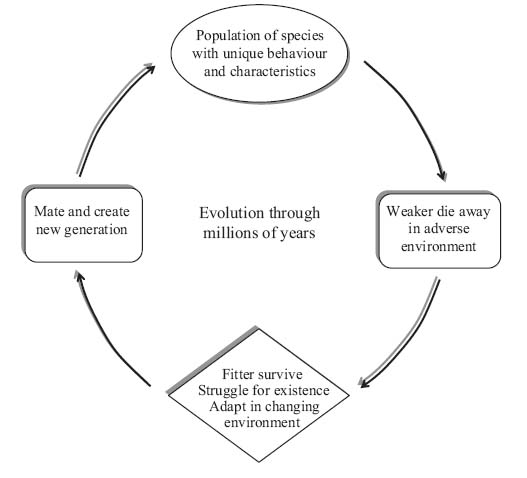6
Evolutionary Computing
6.1 Introduction
We see a diversity of life on earth – millions of species each with its own unique behaviour patterns and characteristics or traits. All of these plants, animals, birds, fishes and other creatures have evolved, and continue evolving, over millions of years. They have adapted themselves to a constantly shifting and changing environment in order to survive. Those weaker and less fit members of species tend to die away, leaving the stronger and fitter to mate, create offspring and ensure the continuing survival of the species. Their lives are dictated by the laws of natural selection and Darwinian evolution – struggle for existence and survival of the fittest. Such an evolutionary process is shown in Figure 6.1.
Figure 6.1 Evolution in the nature

And it is upon these ideas that evolutionary computing (EC) is based. Evolutionary computing is the emulation of the process of natural selection in a search procedure. In nature, organisms have certain characteristics that influence their ability to survive and reproduce. These characteristics are represented by encoding of information contained in the chromosomes of the organisms. New offspring chromosomes are created by means of mating and reproduction mechanisms. The end result will be offspring chromosomes that contain the best characteristics of each parent's chromosomes, which enable them ...
Get Computational Intelligence: Synergies of Fuzzy Logic, Neural Networks and Evolutionary Computing now with the O’Reilly learning platform.
O’Reilly members experience books, live events, courses curated by job role, and more from O’Reilly and nearly 200 top publishers.

